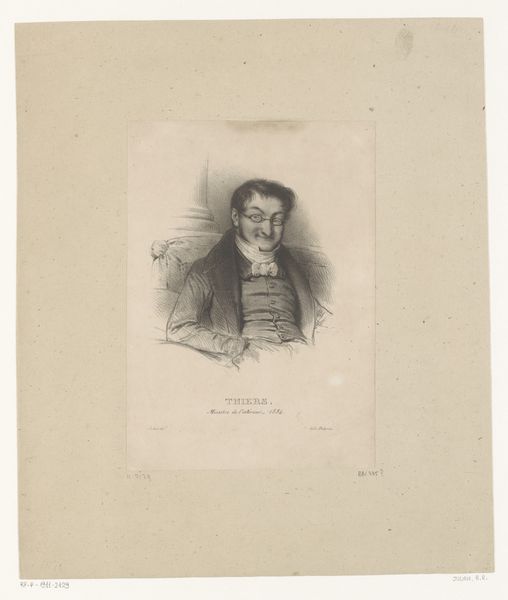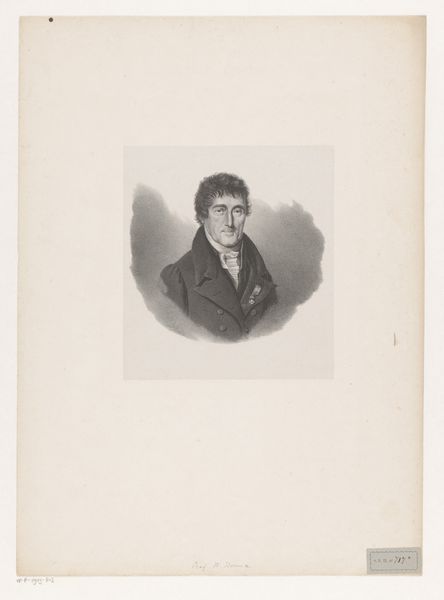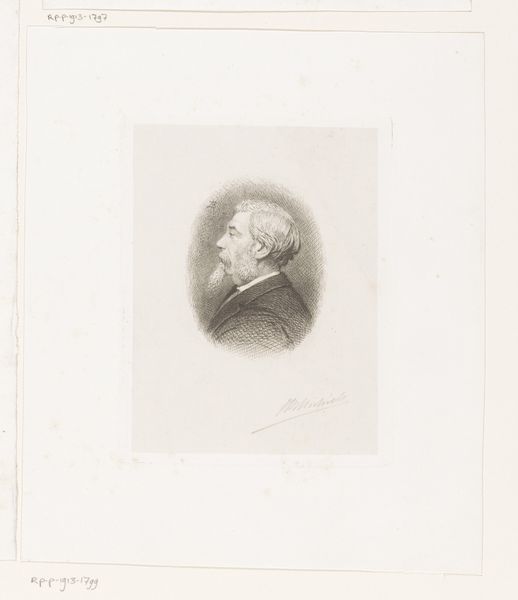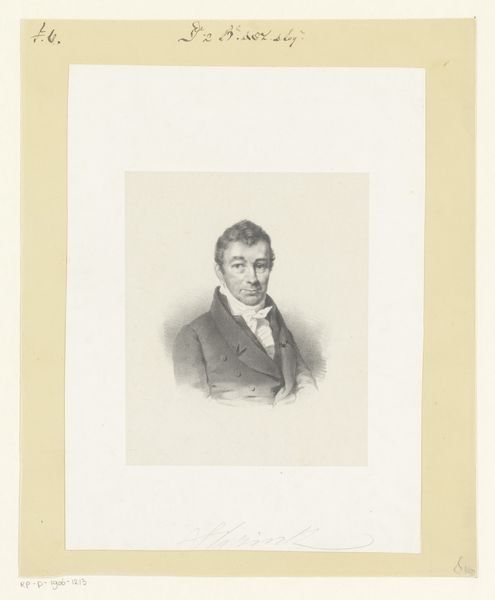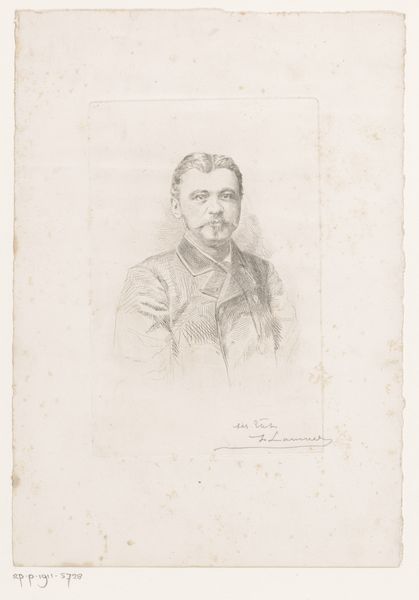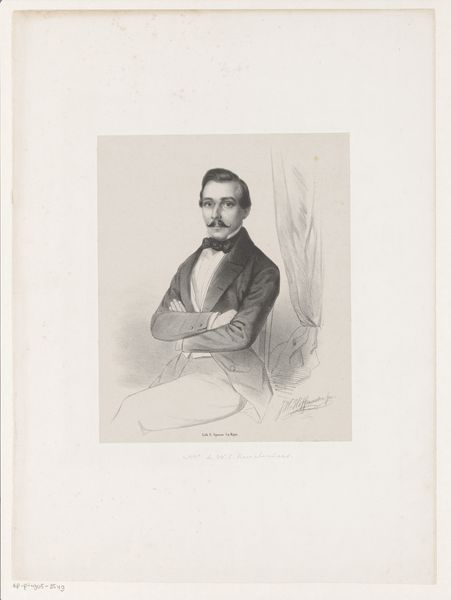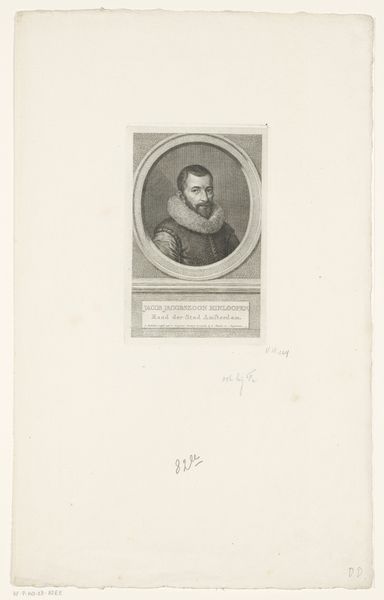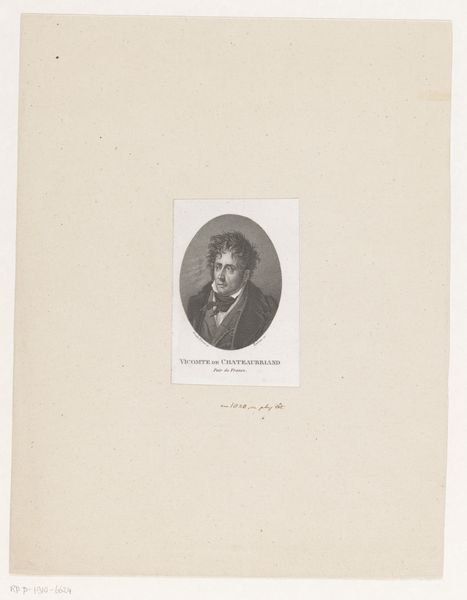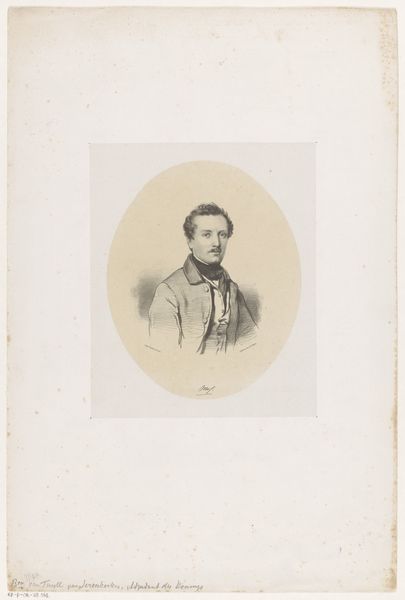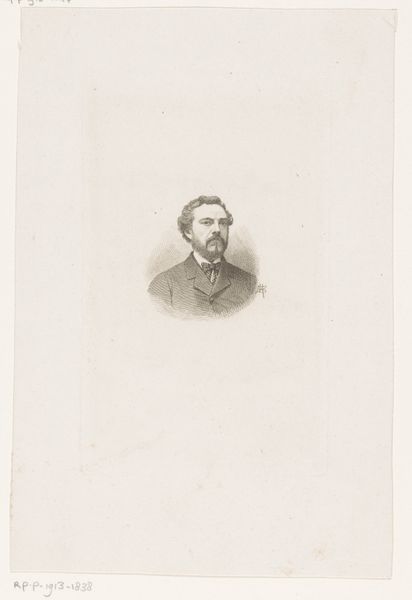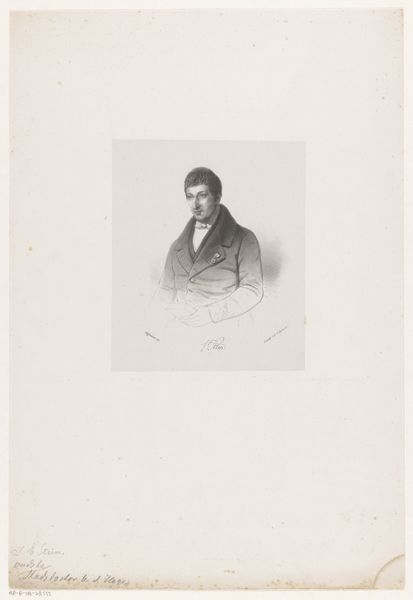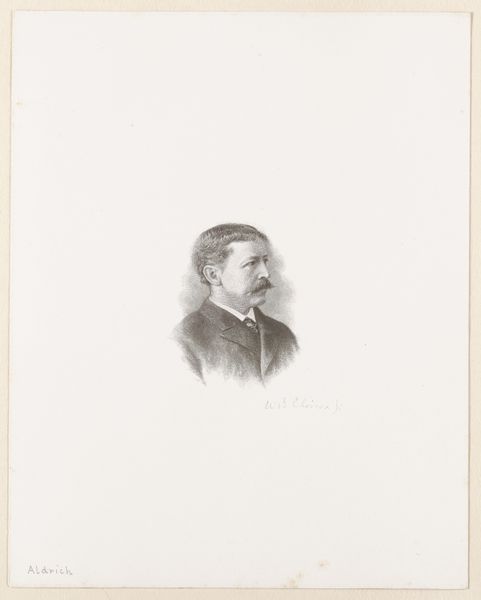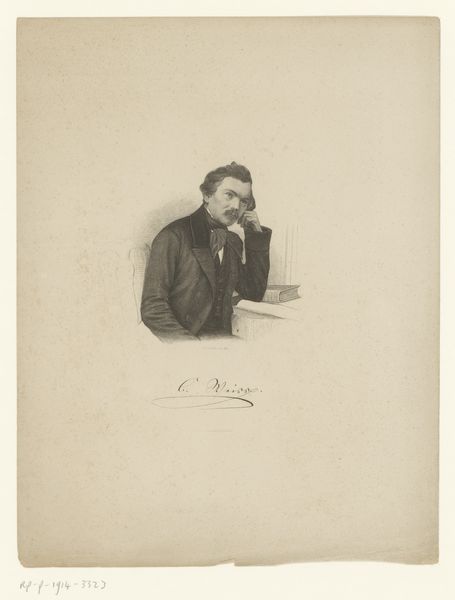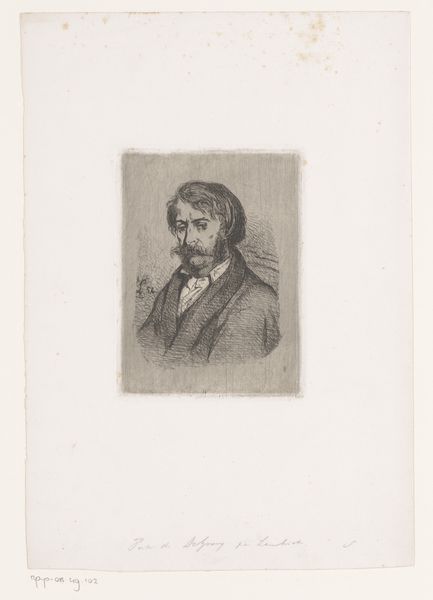
drawing, pencil
#
drawing
#
pencil
#
academic-art
#
realism
Dimensions: height 364 mm, width 251 mm
Copyright: Rijks Museum: Open Domain
Editor: Here we have a portrait from 1867 of Lieutenant L.J. de Wit, attributed to Cornelis Sebille Roos. It's a pencil drawing. I'm struck by the almost photographic detail in the rendering of his uniform. What can you tell us about this work? Curator: Consider the social context: 1867. Pencil, readily available and relatively inexpensive, democratizes portraiture. This isn’t the domain of the oil-painted elite. The artist’s labour is evident, look at the painstaking process involved in rendering those fine details of the uniform epaulettes. Editor: So you’re saying the choice of pencil elevates the everyday? Curator: It signals a shift. The *making* of the portrait, the artist's hand, and the availability of materials become as important as the sitter's status. How is labor expressed within this medium? Editor: It's in the repetitive strokes. The building up of value creates a textured surface within a relatively simple medium. This attention elevates what could have been a very standardized, militaristic depiction. Curator: Exactly. It compels us to question traditional hierarchies separating "high" art from other forms of skilled craft. Even this presentation within a contemporary museum context plays with these notions of value, presentation, and consumption. Editor: I see, by emphasizing the process and the materials we see how art democratizes both the artistic means and subject of portraiture, rather than merely re-iterating hierarchical representation. Thanks. Curator: It encourages us to consider whose stories get told, and by what means.
Comments
No comments
Be the first to comment and join the conversation on the ultimate creative platform.
